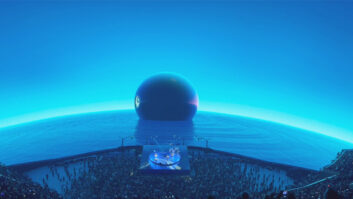
A video wall is only as good as the sum of its parts. Just one component can impact overall visual performance and with changing standards and wide range of product quality, questioning the available solutions will ensure you make the best choice.
Christie director David Griffiths gives AVTE readers his top tips on things to be aware of.
Do all pixels come from the same ‘bin’?

Because the creation process is so complex, it’s impossible to make identical pixels. The best manufacturers sort pixels by brightness and colour. This process is called binning. Using pixels within a tightly controlled bin range, we can ensure a better quality display. Since all pixels are unique, it’s impossible to match them exactly – but choosing from a narrow range of colour and brightness allows manufacturers to achieve a more uniform picture throughout the screen while maximizing power efficiency.
What is the fill factor of your screens?
How much of the screen is covered by light-emitting pixels? That’s your fill factor. It’s impossible to achieve a fill factor of 100 per cent, but this number should be high (at least 40 per cent) to achieve the crispest and most vibrant picture. Most LED is measured by Pixel Pitch – that is the spacing of the centre of one LED to the centre of the next, the secondary point is to consider the actual size of the LED itself – the larger the LED, the higher the fill factor.

The best suppliers will work with you to create a solution that turns your vision into a reality
Do you use black surface-mounted-device (SMD) LED packages?
Throughout an LED display, each pixel is held in place by an SMD package. For the deepest levels of black and highest contrast, these packages should be constructed with a dark encapsulation material, typically an epoxy resin. Be sure to ask for black SMD LEDs.
Who manufactures your driver and switch integrated circuits (ICs)?
ICs are integral to the performance of your display. Without quality driver and switch ICs, the pixels in your display may not receive the best control. This will affect brightness and colour uniformity. Over time, you can easily see the impact of low-quality ICs: the screen could show ghosting, dim lines, and colour shifts.
How does the display stay cool?
Quality LED cabinets allow heat to escape the display, so that it can cool passively (instead of using an active fan). This decreases the overall size of the display, and opens more possibilities for your design and installation. It also provides noise-free operation, which is critical in many applications – especially if the viewing distance is close.

Where are the serviceability points?
The best designs allow for full access from the front, so tiles can be replaced and electronics can be repaired without deconstructing your installation. Most products will also require rear access for certain components. It’s important that you understand which components can be accessed, and from which side of the tile. The best products allow individual tiles to be replaced from the front of the LED video wall, without having to remove the entire cabinet, dramatically reducing space requirements, mounting complexity, service time and operational costs.
Can we see your product in action?
Attending industry trade shows or requesting a live demonstration with multiple vendors will help you ensure top visual quality. Keep in mind, many vendors will offer their own content to maximize impact and minimize deficiencies.
Attending industry trade shows or requesting a demonstration with multiple vendors will help ensure top visual quality
What should you look for when viewing images?
If possible, use a consistent package of visual images (and, preferably, video) to compare the vendors. Make sure to choose content that is representative of your specific application. The first thing is to look for a uniform image across all modules. Also, check for ghosting, ripping, or other anomalies that might appear. And finally, if you can, use a light meter to test brightness.
Is your display certified at the system-level?
When LED components are used together, their interactions can cause additional concerns, such as EMC emission levels that may not meet standards. Completing a system-level certification ensures that the entire system is safe and provides you with a peace of mind. If an LED product is purchased and installed without a system-level certification, a site certification may be required to complete your installation. Ask each potential vendor if site certifications are required, as these will increase installation costs and cause project delays.
Does your supplier offer a complete end-to-end solution?
The best suppliers will work with you to create a solution that turns your vision into a reality. Ask if they offer additional products, like structures, processing and content management. The right mix of technologies and services will help create an entire experience for your audience. Make sure that your manufacturer will stand behind their product and make the installation right, should any problems arise.







